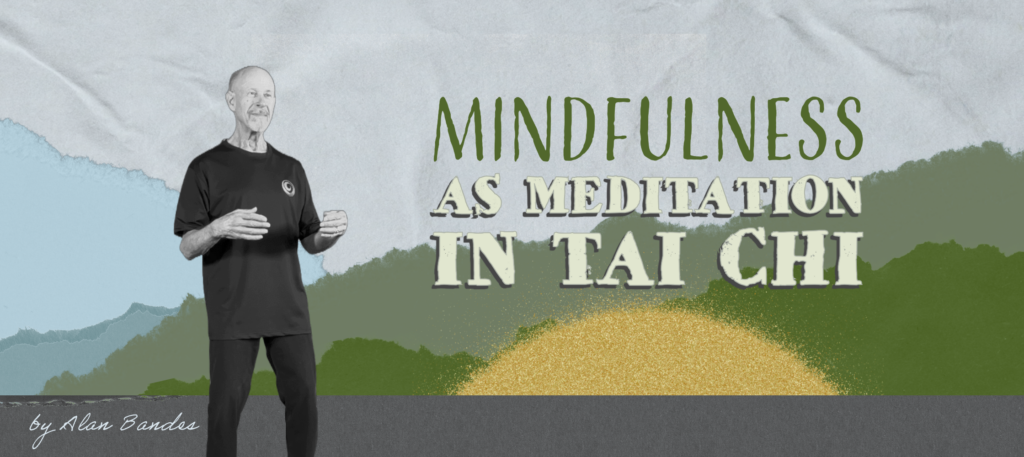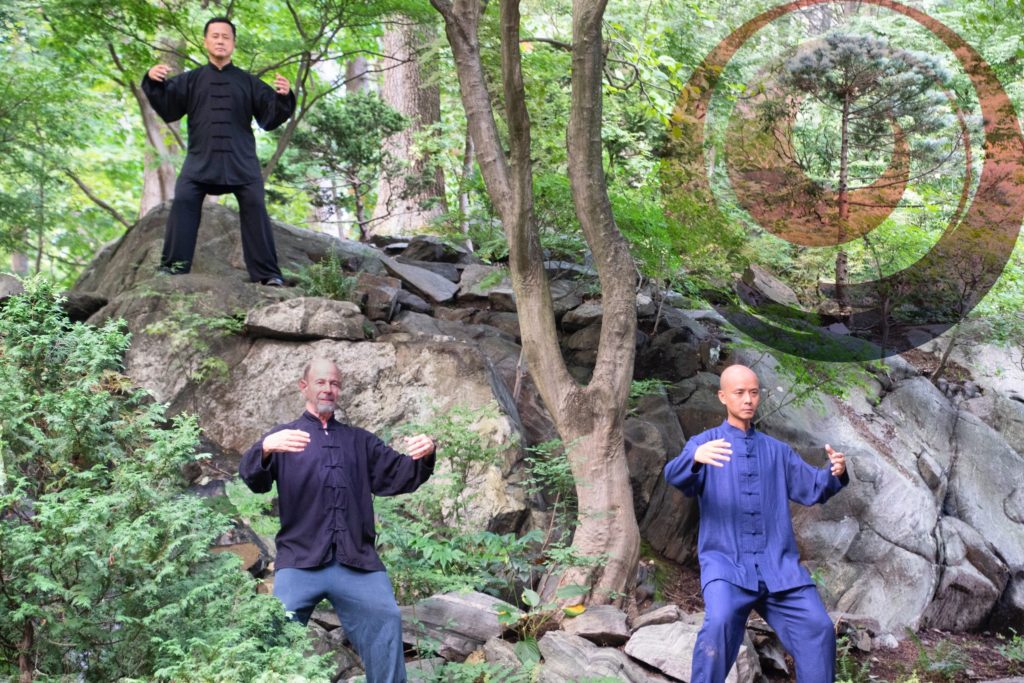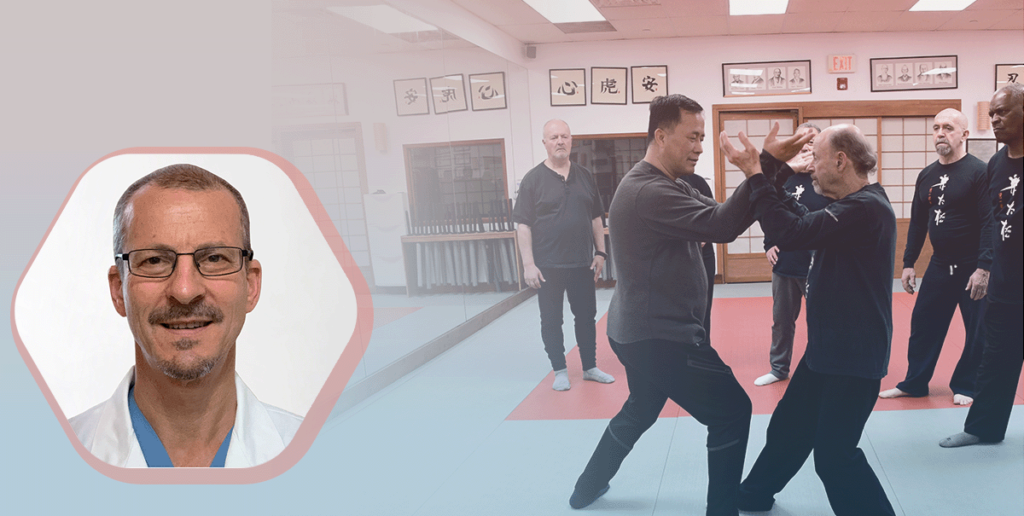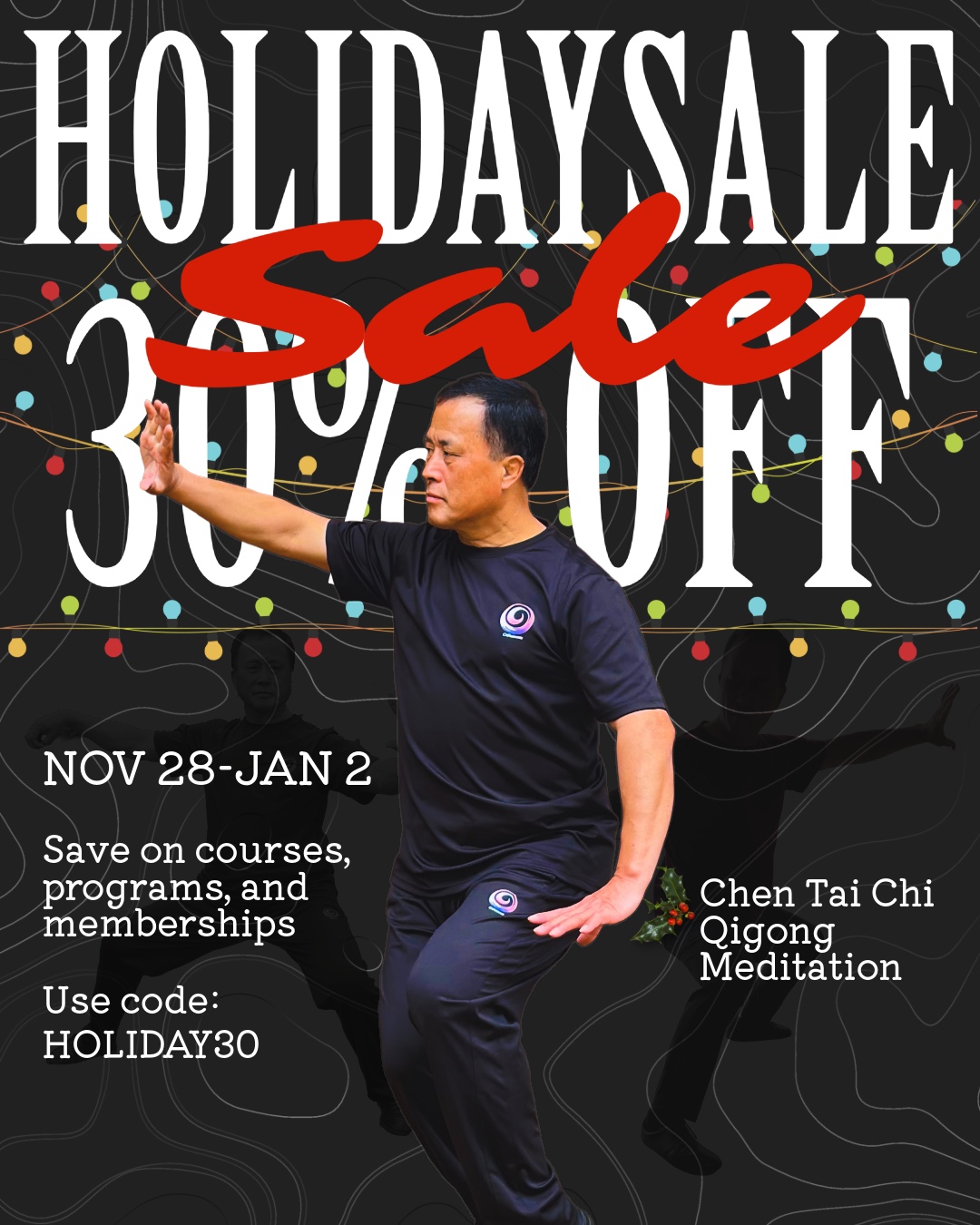Mindfulness as Meditation in Tai Chi

Why Meditate?
Meditation, in its many forms, is something most of us should attempt to practice. It not only reduces stress in our lives but also improves our health and sense of well-being. There are many reasons people practice meditation: to clear their minds, reduce stress, raise spirits, improve consciousness, relate better to the world and people around them, solve problems, and improve health, just to name a few.
Traditional Meditation: The Art of Stillness
When people think of meditation, the most common image is often that of a person sitting quietly meditating. This is the most common form of this practice. It calls for learning to clear one’s mind to achieve a state of peace and calm. Learning to be quiet and clear one’s mind is challenging. It is quite natural that when novices try to be still, their minds remain active with thoughts and distractions. These distractions are referred to as the “monkey brain.” They impede the ability to clear the mind and meditate. To help deal with these distractions, a practitioner learns techniques to trick the “monkey brain.” Some techniques might include focusing on posture, breathing methods, reciting a mantra, or producing sounds such as “om.”
Active Meditation: Introducing Tai Chi
For those who have wanted to learn how to meditate but have not been successful in sitting still, here’s another way to achieve many of the goals of stationary meditation: active meditation as practiced through the study of Tai Chi.
While Tai Chi has the pedigree of an effective martial art, it has morphed and evolved through many centuries and cultures in which it has been practiced. Aside from being an effective form of self-defense, many individuals have discovered additional, highly beneficial components to learning Tai Chi: improved sense of well-being, stress reduction, strength, flexibility, balance, increased awareness or “mindfulness,” increased energy, and improved health.
Tai Chi, through this abundance of positive effects, has been recognized by many medical and research institutions, including Harvard Medical School and the Mayo Clinic, as one of the most effective forms of exercise for health and well-being. Performing Tai Chi offers an opportunity to combine exercise with meditation.
How Tai Chi Works as Meditation
Meditation requires mental engagement, a state of awareness, and focused consciousness. Learning Tai Chi does exactly that. On a simplistic level, just learning the basics involves a lot of mental engagement. This is true when performing the elemental Standing Mountain posture or preliminary Silk Reeling and Qigong exercises. Trying to learn more complicated forms, such as the Chen introductory 19 form or the classical Lao Jia Yi Lu, requires even more mental engagement and focused consciousness. If the monkey brain enters the mind and distracts a practitioner, the consequences become immediately apparent. Confusion and loss of sequence will cause one to stop and regroup.
The Learning Process: From External to Internal
To help students understand the benefits of Tai Chi as either a health practice, a martial art, or both, basic steps have been developed through centuries of studying and teaching its characteristic slow, deliberate movements. At first, a new student learns externally, mimicking the movements of the instructor. The basic structure and sequence of each movement are practiced repeatedly, with the teacher providing corrections and insight. The rudimentary introduction to learning correct body alignment while focusing on the details of each movement is a form of basic meditation. There is no room to think about anything else. The learning process forces concentration on being in the moment.
As the student progresses, the alignment and sequence of movements become easier to perform. That is just the beginning. The more one studies and practices, the more insights are revealed until the student begins to move from external imitation to internal “feeling.” This is where the concept of Tai Chi as a total mind-body exercise starts to become apparent. It is at this point the student becomes capable of recognizing faults during practice and begins to make their own corrections, gradually transitioning from a novice student to a more advanced “practitioner” of the art.
The Depth of Tai Chi Practice
A program of Tai Chi is designed to move from simplistic, basic movements to more complicated sequences and techniques. The more a practitioner studies, the more benefits are gained. There is potentially no end to the revelations of this mind-body exercise. As stated previously, Tai Chi is a martial art. For those interested in the martial aspect, the meditative aspect of mindful movement will still apply to the effective implementation of martial techniques. It is up to the practitioner to determine the emphasis of their practice.
Achieving Meditative Benefits Through Tai Chi
In order to achieve the meditative and related health benefits of Tai Chi, one must simultaneously focus on the feeling of motion within while paying attention to the external physical surroundings.
Whether it involves the practice of classic qigong repetitive exercises or form study, one must learn to “listen to your body,” meaning to focus on a number of details such as:
- Alignment of the head, central core, and limbs
- Understanding the coordination between the lower dan tian (considered the center of the body and main reservoir of qi, our internal energy) with movement
- Awareness of positioning of arms and legs during specific movements which provide the balance of yin and yang
All of these contribute to healthy qi energy flow. Adding to this, one must also be aware of the physical surroundings, to be conscious of all directions: up, down, front, and back.
Conclusion: The Result of Active Meditation
Through focus and awareness, the mind has no opportunity to wander. The world fades away while the mind and body reset. The body is re-energized, and a feeling of internal strength, balance, and well-being envelops the person. This is the result of active meditation through Tai Chi.
About the Author
Alan Bandes has been teaching Chen Style Tai Chi for over 2 decades while studying under Master Ren Guangyi. He teaches in-person, and as an instructor for Chi Force Community where he offers live-streamed classes. His Chi Force courses are Awaken the Legs, Tai Chi & Qigong Fundamentals, Standing Mountain Qigong, and Tai Chi Silk Reeling Qigong.







Responses